Youth and U.S. | Miller in Europe | Miller In Utah | TV and Film | In Iran
DR. LLOYD MILLER BACKGROUND
AMERICA, YOUTH
Born in 1938, Miller began playing piano at three and later accordeon. His father was a traditional jazz clarinet player who had worked his way through Carleton College playing with the famous Doc Evans. Miller's mother played piano and in her youth played banjo and C melody sax. Miller's mother was also a skilled ballet dancer having studied with Michael Mordkin who was Pavlova's partner. She was an excellent swordswoman and had fenced with her college friend in front of Musolini's Black Shirts acclaimed by a very long ovation and showers of many flowers for the two American women fencers. During her years as USC where she was Helen of Troy and the first woman to have her own car on campus, she started the first women's polo team. Her charity work and influence in the Southern California community earned her family a place in the Blue Book of notable southern Califormia families.
Miller's Mother as a ballet dancer and instructor
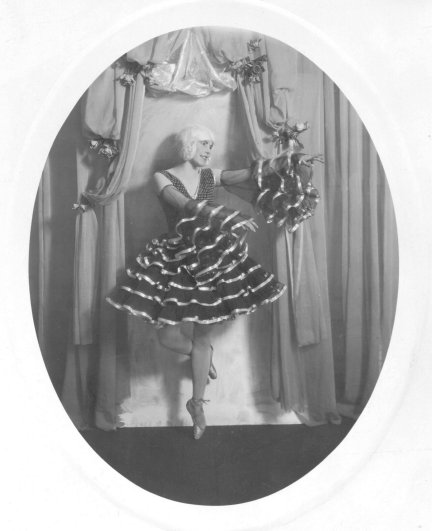
Miller's Mother when presented at
the Court of St. James in England
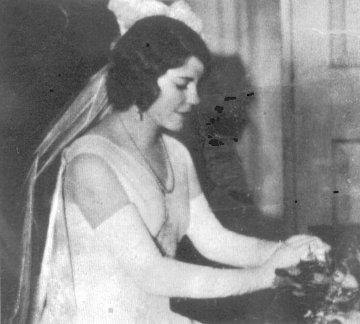
By his early teens, Miller had learned to play piano by experiment and by following the keys of the family player piano slowed down although he didn't realize until later that the piano rolls had been recorded by two people playing four handed. Miller found his mom's old 1920s banjo and C melody sax and he also fooled around with his dad's clarinet until he bacame quite skilled in the style of George Lewis, Johnny Dodds and later Jimmy Giuffre. He also got his hands on an old cornet and later a trombone both of which he soon learned. Miller organized a New Orleans jazz band to play for the Flintridge Prep School spring festival and was booked with his dance band "Miller's Men of Music" to play for the California Flower Show right across from the Firehouse Five Plus Two.
Young Miller playing accordeon in Glendale, California

Young Miller composing at his home in Glendale
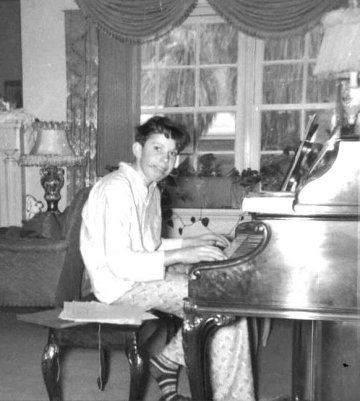
Later at Todd School for Boys in Woodstock Illinois, Miller learned string bass to play in the Todd school band andcontinued to play various instruments. He teamed up with a banjo player to eventually cut his first 78 of George Lewis clarinet styling
In 1951 Miller's father took him to New Orleans where Miller heard the famous Alphonse Picou live playing his famous solo on High Society and where he spent three days hanging out with famous clarinettist George Lewis including dinner at George's home in Algeres accross the river from New Orleans. George Lewis commented positively on Millers first 78 record and encouraged him to keep up the good work.
Miller in the Madison High Band in Rexburg Idaho, 1950s
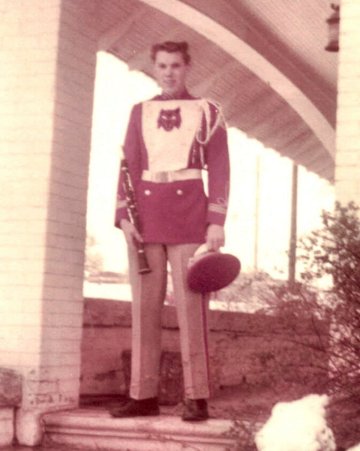
During his last two years of High School in Rexburg Idaho, Miller was very active in different bands. He still fervently clung to his old style Albert system clarinet which he affirmed had more soul, less stupid keys and had options for the in between "blue" notes. His band teacher Hal Barton, however, insisted that he buy a Boehm system or be dismissed from band. Miller's kind grandfather bought the clarinet but Miller couldn't stand playing it.
Finally the band leader gave Miller the ultimatum that if he "ever brought that Albert system to band again he would be kicked out." That night, Miller stayed up late making a clarinet out of a piece of metal pipe by drilling holes in it and making one key with a paper clip, a wad of Kleenex and a rubber band. The thing worked great and sounded a whole lot better than the Boehm. The next day in band Miller was wailing out some cool improv during Semper Fidelis and the band leader halted the rehearsal. He glared at Miller yellling "what are you doing?". Miller answered that he was just adding some cool George Lewis licks to spice things up.
Then the band instructor saw the horrid metal pipe clarinet and screamed "Miller, get out!!!" Miller whimpered "but I didn't bring the Albert like you said not to?' With a few laughs from the other kids and caring smiles from a neighbouring girl clarinetist and the french horn girl both of whom he had crushes on, Miller slinked away never to be seen in band again.
But Miller got his revenge one early morning at about 2 a.m. when he and some of his prankster jazz friends "serenaded" the band leader outside his bedroom window for a half hour before being "thanked" and sent off. The band instructor later referred Miller for gigs and hired him to work in his music store fixing instruments and learning to tune pianos; so it all ended well.
"Zoot" Miller in Rexburg in the 50s

In 1957, Miller went with his family to Iran where he stayed for a year before leaving for Europe to find his fate as a jazzman. In 1963, Miller returned to the U.S. after enjoying success with the famous Jeff Gilson band in Paris and began study at BYU in Utah.
After successful years in the jazz scene in Utah including winning Intercollegiate Jazz Festival composer / Aranger trophies for three consecutive years, during this time Miller was invited to perform at the famous first Woodstock Festival and the Phillidelphia Folk Festival.
Invitation to Miller to Woodstock and the Philadelphia Folk Festival
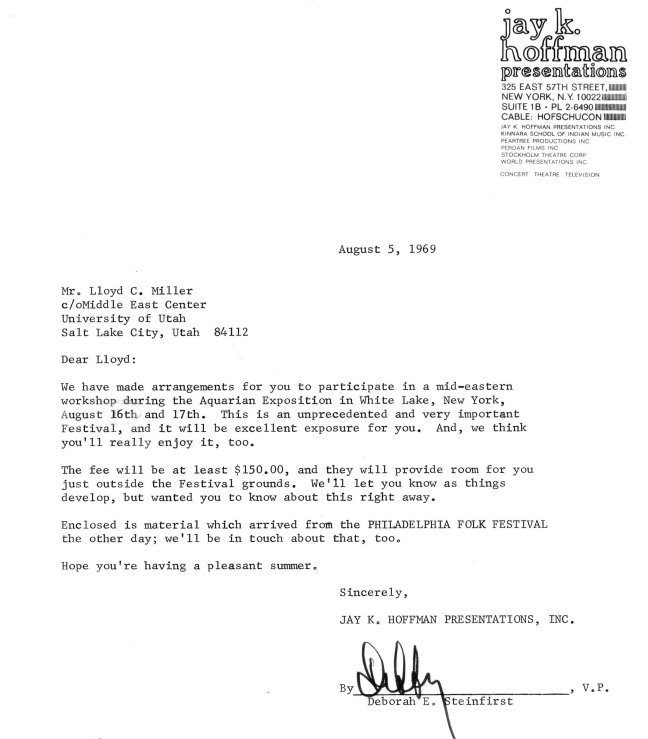
That same year, Miller was invited to offer a workshop at San Jose State College.
Miller's workshop at San Jose State

Miller's agent, Jay Hoffman, set up a New York City debut at the Jewish Museum with a local percussionist. The concert of Persian, Afghan and Central Asian traditional music was a huge success.
Program for Miller's concert at the New York Jewish Museum
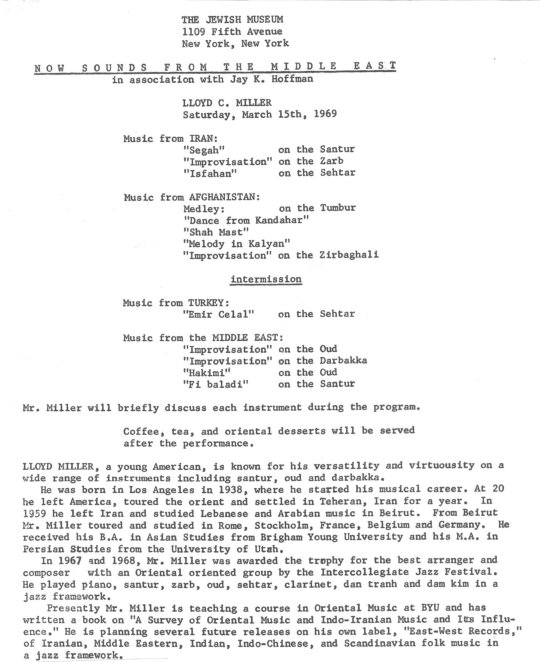
Miller finished his BA in Asian Studies. In 1967, Miller went to the University of Utah in Salt Lake City to complete an MA in Middle East Studies in 1969 and enter a PhD program in Persian. By 1970 Miller was awarded a Fulbight Hays scholarship to research music for his dissertation in Iran.
In 1977 Miller returned from Iran after 7 highly successful years as a TV personality with his own prime time major network show and as a major arts writer for every publication in Tehran, one in Beirut and two in London. His work as public relations person for the Center for Preservation and Propagation of Iranian Traditional Music and his nearly full time presence at the Center continued his study of Iranian traditional music that he began in Paris with master Daryush Safvat who was the director of the Center.
After returning to Utah, Miller was invited many places to perform Eastern music or jazz of various styles including an assembly in his home town at Glendale College.
Miller's assembly at Glendale College
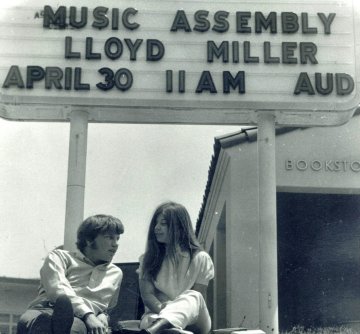
Among the many festivals and concerts where Miller performed was the famous Telluride Jazz Festival where he was invited two years in a row.
Miller at Telluride Jazz Festival
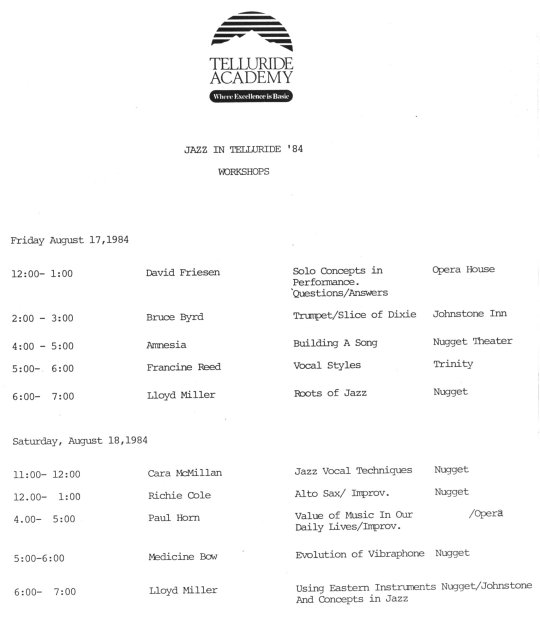
In 1991, Miller offered a paper on the roots of jazz at the International Jazz Educators convention in New Orleans. Because of his lifelong dedication to preservation of traditional old New Orleans jazz and instrumental / vocal skills, Miller was invited to sit in at Preservation Hall, one night on clarinet and one on piano when he sat in for legendary pianist Sadie and also sung his version of Creole French song Eh La Bas.
Miller on piano at Preservation Hall in New Orleans
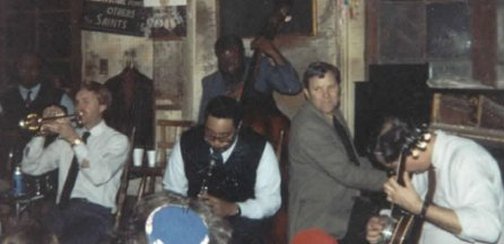
Also in the 1990s, Miller's reputation as a prize winning arranger / composer reached the ears of then Utah Symphony conductor Chris Wilkins who invited Miller to have his transcription / reconstruction arrangements of Bunk Johnson's Closer Walk With Thee, King Oliver's Dippermouth Blues and Bix Beidebecke's Jazz Me Blues premiered by Utah Symphony. The overwealming positive audience response to Miller's arrangements at the Utah Symphony concert earned his scores several more performances in Salt Lake and other Utah cities.
When Chris Wilkins was offered the conductorship of Colorado Springs Symphony, he invited Miller to come there for concerts including premiers of two full symphony scores by Miller of A Night in Tunesia with solos transcribed from Dizzy Gilespie and Charley Parker and Satin Doll.
When Curt Musprat replaced Chris Wilkins at Utah Symphony, Miller was invited to score Eh La Bas for the full symphony. At the performance, Miller sang the Creole text and invited audience response. The concert was a big hit and Miller was invited to work his magic at other Utah Symphony concerts.
More recently, Utah symphony conductor Korey Katseanas invited Miller to score High Society in the style of Bunk Johnson with the famous Alphonse Picou clarinet solo. Miller tried a new concept of having the full string section play the four notes of the banjo pizacatto. The idea was a successand the score was very well received and played again at various Utah Symphony concerts around Utah.
Symphony conductor Chris Wilkins and Miller
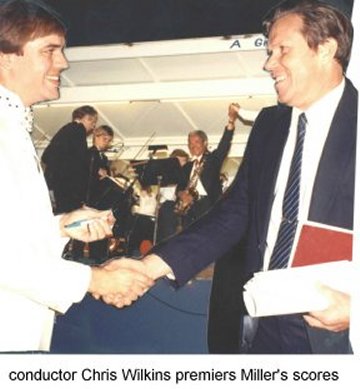
MILLER'S UTAH SYMPHONY SCORES
NEW ORLEANS
High Society (2 min. mp3)
Over In the Gloryland (80 sec. mp3)
Eh La Bas (90 sec. mp3)
Closer Walk With Thee (65 sec. mp3)
1920s CHICAGO
Dippermouth Blues (70 sec.mp3)
Jazz Me Blues (80 sec.mp3)
COLORADO SPRINGS SYMPHONY SCORES
Satin Doll (75 sec. mp3)
A Night in Tunesia (1 min. mp3)
Other than producing and presenting concerts, festivals, workshops and other musical events, Miller performs continually with his dozen of so music ensembles. These are: Salt City Saints, Roaring Twenties, L.M. Trio, Duo and Solo, SwingnJive & Costa Caliente, L.A. Blues, Oriental Jazz, Oom Papas, Cajun gumbo, Earth Tones World Music, Eastern Arts, Asian Arts, Ancient Echoes and more.
Youth and U.S. | Miller in Europe | Miller In Utah | TV and Film | In Iran
|